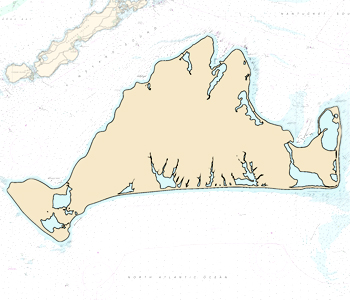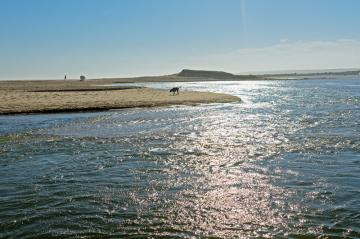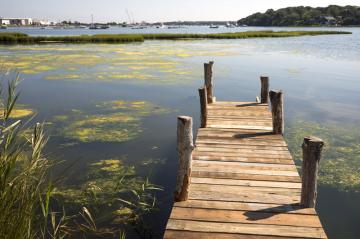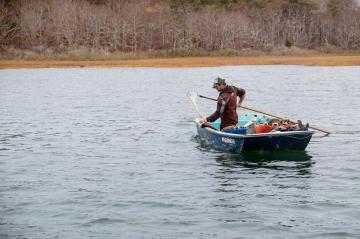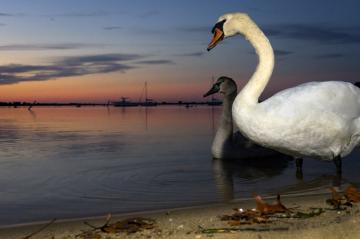Island ponds are a connection to cultural heritage and a livelihood for fishermen. But housing booms and land-use changes threaten to undo a delicate balance.
In many ways, Martha’s Vineyard is defined by its ponds. More than two dozen coastal ponds span the periphery of the Vineyard, from the flat, sandy outwash plain of the south shore to the rugged, morainal north shore. Home to shellfish, finfish, nesting birds and diverse plant communities, these ponds form a vital part of the Island economy and ecosystem. They provide recreation and put food on the table. And they are in trouble, increasingly threatened by nitrogen overloading from development.
Stories
While the Vineyard is perhaps best known for the ocean, Vineyarders have deep ties to the ponds that were carved into the Island landscape some 20,000 years ago.
The draw began with duck hunting in the early 1900s. Tisbury Great Pond was a haven for waterfowl, and wealthy Boston gentlemen took notice.
All the saltwater ponds on the Vineyard are impaired to some degree, and each one faces a unique set of conditions. Public interest has reached a tipping point.
A few hundred alternative systems are installed on Martha's Vineyard, mostly in Edgartown and Oak Bluffs. The technology could help achieve nitrogen mitigation in Island coastal ponds.
Without wastewater treatment facilities, Island ponds could be in worse shape. Estuaries suffer from nitrogen overload, coming mostly from septic systems that remove bacteria but not nitrogen.
Man-made breaches at Island ponds help maintain salinity for shellfish and eelgrass and flush out nitrogen that accumulates mostly from septic tanks and runoff.
A Sengekontacket oyster project has been such a success that the shellfish department will ask selectmen to open the pond to commercial oystering.
The Massachusetts Estuary Project, which studied 12 Island bodies of water, has raised awareness of growing nitrogen problems and spurred action at several levels.
